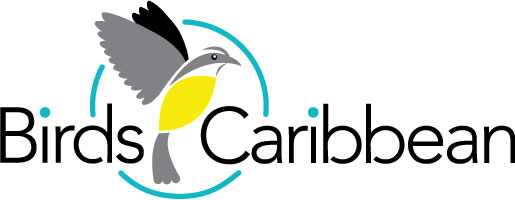Seabird Conservation

Seabirds (and waterfowl) are the only animals that have conquered the sea, land and sky. Over twenty species of seabirds live in the Caribbean, and many more visit every (see the West Indian Breeding Seabird Atlas). Seabirds spend most of their lives on or over the sea, foraging, feeding or resting. They are highly adapted to this unique way of life. Many have webbed feet (to help them swim and dive), waterproofed feathers (to keep them warm and afloat), salt glands (that allow them to excrete the salt from the seawater they drink), and acute vision, a strong sense of smell and sharp bills (to help them find and catch food). Their long wings support them while travelling over the oceans in search of food and, on land, living in colonies helps to protect them from predators.
Before humans lived in the Caribbean (~7,000 years ago), the islands supported vast numbers of seabirds. On many islands, there were so many that their droppings (called guano) formed piles hundreds of feet high, and were mined for fertilizer. Today, tropical seabirds, like those in other areas of the world, are threatened by human activities. In fact, seabirds are now one of the most threatened groups of birds in the world. Many colonies are declining in size and some have disappeared. On land, introduced rats, cats and dogs prey on eggs, chicks and even adults. In some parts of the Caribbean, humans still take eggs, chicks and adults for food and aphrodisiacs. Coastal development and sea level rise destroy and damage nesting habitat. Even the oceans are no longer safe. Seabirds often feed around fishing boats, and are caught and die in fishing gear. Overfishing, pollution and climate change have depleted their food sources. Hungry seabirds mistake floating plastic for food and fill their bellies with trash. Heavy metals from marine pollution also accumulate in their bodies.
Caribbean seabirds have much to teach us about the health of the seas around our islands. We need to understand their ecology, so we can protect them, their habitats, and the marine resource on which we all depend. Unfortunately, there have been only a few studies on seabirds in the Caribbean. This is partly because of the many practical difficulties in studying them, but they are also less attractive to funders than accessible land birds and migrants, and other mobile marine animals like sharks and turtles. For most seabirds, the Caribbean is one large connected habitat. Therefore, it is important for scientists and conservationists across the region to work together to understand the big picture. This was first recognized in 1998, when we formed the Caribbean Seabird Working Group. Healthy seabird populations are possible in the Caribbean, but we must all work together to understand, manage and protect them. To find out more about who we are and what we do, please follow the links below.
